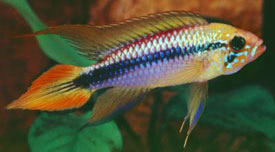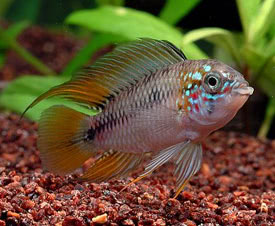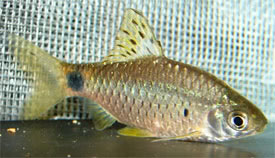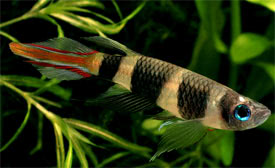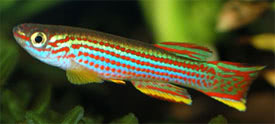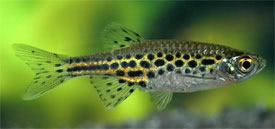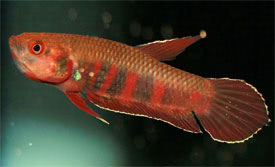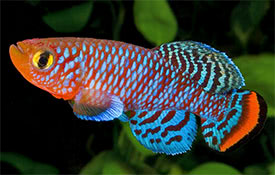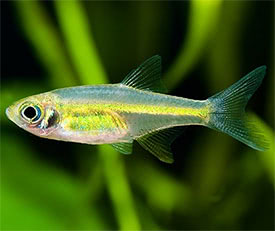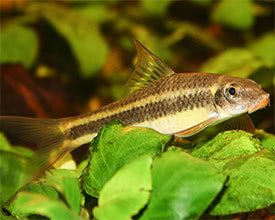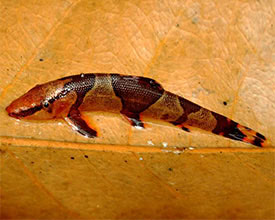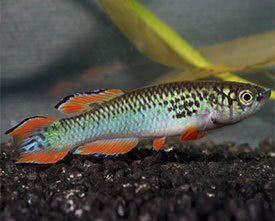
 Magyarul / Hungarian
Magyarul / Hungarian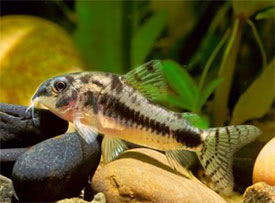
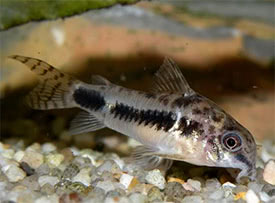
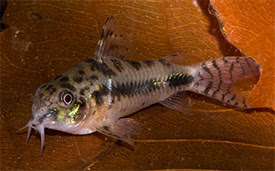
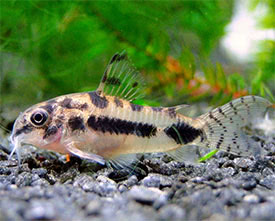


- Scientific name: Corydoras habrosus
- Synonyms: -
- Common name: Salt and Pepper Cory, Dainty Cory, Venezuelan Pygmy Cory
- Group: Catfishes
- Habitat: South America; Eastern Colombia and Western Venezuela; in the upper Rio Orinoco basin.
- Size: 3-3.5 cm
- Biotope: Found in flooded plains and lagoons, and in shallow marginal zones of small rivers with lots of aquatic vegetation, where water flow is not as strong.
- Social behavior: A peaceful, schooling catfish, that can be kept in a community tank with other similarly sized and peaceful fish. This fish usually swims near the bottom.
- Diet: Omnivorous; They readily accept live and frozen foods, such as Tubifex, and bloodworm and will also eat dried foods and tablets. The foods, however, must be small enough for the fish to consume.
- Breeding: Quite easy
- Tank: Minimum 40 litres
- Population: 6 fish for 40 litres
- Decoration: They like to burrow, so use fine gravel or river sand as substrate. Along the back and the sides of the aquarium plant some aquatic plants and place several pieces of driftwood.
- Temperature: 20-26 °C
- pH: 5.5-7.5
- Hardness: 2-10 NK°
- Lifespan: 5-8 years
Description: The base color of the head and body is light brown. The body markings of Salt and Pepper Cory can be different individually, but basicly they have 3 smaller or larger blotches on their body: one at the base of the dorsal fin, one from the gill cover to the center of the flank, and one larger blotch at the base of the caudal fin. On some specimens these markings merging into one band running the full length of the body, but the blotch on the caudal peduncle is always larger than the rest of these markings. Dorsal fin has two rows of fine spots, while the caudal fin has four rows of light spots on the lobes. The rest of the fins are clear. They have very similar body markings to Corydoras cochui, but the latter has 4 blotches along the flank. All Corydoras catfish like to shoal, so keep them in groups of 5 or more fish. Females are a little larger and have a rounder belly, while the males are a little slimmer.
Cories are best bred in small groups that have a ratio of 2-3 males to each female, and perform a large water change with soft water, or rainwater cooler than the tank water to initiate spawning. They will become much more active during courtship, the males will start to chase the female around the tank while touching the female with their snout and they adopt a T-shaped spawning position, where the male will grab the females pelvic fins and twist his body into hers and she will release her egg pouches at the same time as the male sperm. The light-yellow eggs are about 0.8 in diameter and are usually deposited on the underside of leaves or on the aquarium glass. The eggs will hatch in 3 to 4 days and once the fry have fully-absorbed their yolk sacs they can be fed with powdered flake foods or newly hatched brine shrimp. Maintaining water quality is the key to raising cory fry so ensure regular water changes take place. The fry seem less susceptible to diseases when maintained over a thin layer of sand rather than in a bare-bottomed tank.
























